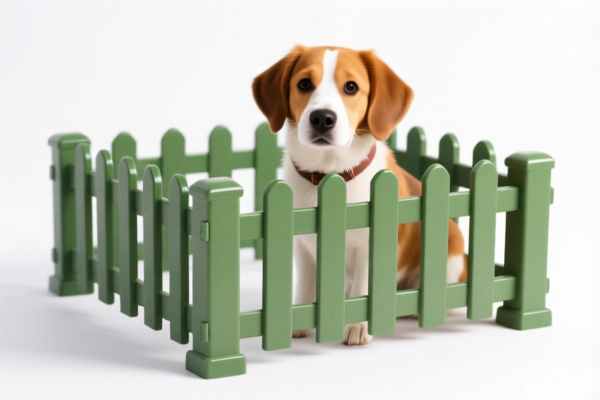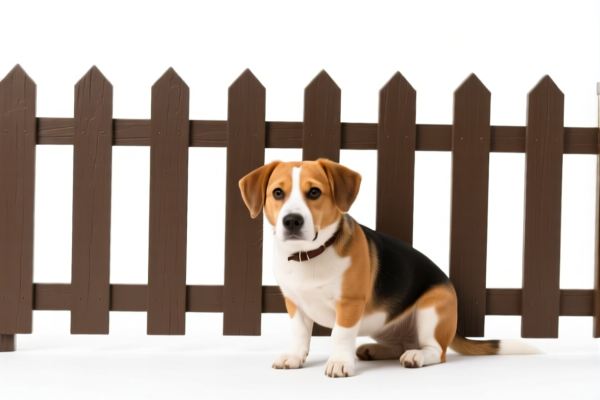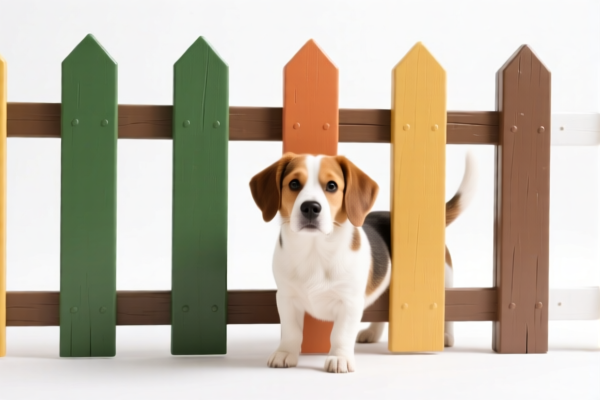| HS Code | Official Doc | Tariff Rate | Origin | Destination | Effective Date |
|---|---|---|---|---|---|
| 3926903000 | Doc | 59.2% | CN | US | 2025-05-12 |
| 3926909989 | Doc | 42.8% | CN | US | 2025-05-12 |
| 3920795000 | Doc | 58.7% | CN | US | 2025-05-12 |
| 3920995000 | Doc | 60.8% | CN | US | 2025-05-12 |




Pet Containment Screen
A pet containment screen is a barrier designed to restrict a pet's movement to a defined area, typically within a home or outdoor space. These screens offer a less restrictive alternative to crates or traditional fencing, allowing pets more freedom while preventing escapes or access to undesirable areas.
Materials
Pet containment screens are constructed from a variety of materials, each offering different levels of durability, visibility, and cost:
- Mesh: Commonly made from polyester or nylon, mesh screens provide good visibility and airflow. They are often lightweight and relatively inexpensive, but can be prone to tearing from determined pets.
- Metal: Aluminum or steel screens offer superior durability and resistance to damage. They can be more expensive and heavier than mesh options.
- Wood: Wooden screens, often constructed from treated lumber, provide a more aesthetically pleasing appearance. They require more maintenance to prevent weathering and damage.
- Plastic: PVC or similar plastic materials offer a balance of durability and cost-effectiveness. They are often lightweight and easy to clean.
Purpose
The primary purpose of a pet containment screen is to:
- Confine Pets: Limit a pet's access to specific rooms, areas of a yard, or potentially hazardous locations.
- Prevent Escapes: Secure pets within a designated space, preventing them from wandering off.
- Protect Furniture/Gardens: Shield delicate items or areas from pet-related damage.
- Provide Safe Space: Create a secure and comfortable environment for pets, particularly those recovering from illness or injury.
Function
Pet containment screens function by creating a physical barrier that pets are discouraged or unable to overcome. They typically rely on:
- Height: Sufficient height to prevent jumping or climbing over the barrier.
- Secure Attachment: Firm anchoring to walls, doorways, or the ground to prevent pets from pushing or knocking down the screen.
- Visibility: Allowing pets to see their surroundings, reducing anxiety and promoting a sense of security.
- Flexibility: Adjustable designs to accommodate different spaces and pet needs.
Usage Scenarios
- Indoor Containment: Restricting access to bedrooms, kitchens, or home offices.
- Stairway Barriers: Preventing pets from accessing stairs, particularly for puppies or senior pets.
- Porch/Deck Enclosures: Creating a safe outdoor space for pets while preventing escapes.
- Garden Protection: Shielding plants and flowers from pet-related damage.
- Temporary Containment: Providing a secure space for pets during renovations or while visitors are present.
Common Types
- Freestanding Screens: Portable and adjustable screens that do not require permanent installation.
- Pressure-Mounted Screens: Utilize pressure to secure the screen in doorways or hallways.
- Hardware-Mounted Screens: Require screws or nails for permanent installation, providing a more secure barrier.
- Roll-Up Screens: Retractable screens that can be easily rolled up when not in use.
- Custom Screens: Designed and built to fit specific spaces and pet needs.
- Pet Gates with Extensions: Gates with add-on panels to create wider containment areas.
Pet containment screen falls under articles of plastics and articles of other materials. Based on the provided information, the following HS codes may be relevant:
- 3926903000: This HS code covers “Other articles of plastics and articles of other materials of headings 3901 to 3914: Other: Parts for yachts or pleasure boats of heading 8903; parts of canoes, racing shells, pneumatic craft and pleasure boats which are not of a type designed to be principally used with motors or sails”. While not a direct match, if the screen is used as a part of a pleasure boat, this code could apply. The total tax rate is 59.2%, comprised of a 4.2% base tariff, a 25.0% additional tariff, and a 30.0% additional tariff effective April 2, 2025.
- 3926909989: This HS code covers “Other articles of plastics and articles of other materials of headings 3901 to 3914: Other: Other”. This is a broad category and could potentially apply if the screen doesn’t fit the specific description of 3926903000 and is made of plastics or other materials within headings 3901 to 3914. The total tax rate is 42.8%, consisting of a 5.3% base tariff and a 7.5% additional tariff, increasing to 30.0% on April 2, 2025.
- 3920795000: This HS code covers “Other plates, sheets, film, foil and strip, of plastics, noncellular and not reinforced, laminated, supported or similarly combined with other materials: Of cellulose or its chemical derivatives: Of other cellulose derivatives: Other: Other”. If the pet containment screen is manufactured as a plate, sheet, film, or strip from cellulose or its chemical derivatives, this code may be applicable. The total tax rate is 58.7%, with a 3.7% base tariff and a 25.0% additional tariff, rising to 30.0% on April 2, 2025.
- 3920995000: This HS code covers “Other plates, sheets, film, foil and strip, of plastics, noncellular and not reinforced, laminated, supported or similarly combined with other materials: Of other plastics: Of other plastics: Other”. If the screen is a plate, sheet, film, or strip made of other plastics (not cellulose derivatives), this code could be relevant. The total tax rate is 60.8%, comprising a 5.8% base tariff and a 25.0% additional tariff, increasing to 30.0% on April 2, 2025.
It is important to determine the exact material composition and manufacturing process of the pet containment screen to select the most accurate HS code.
Customer Reviews
No reviews yet.